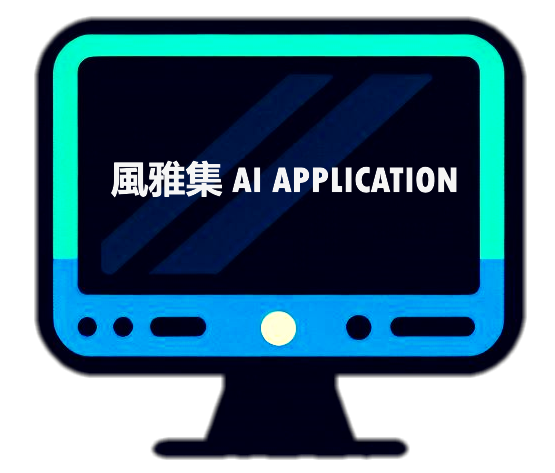T
2025年5月15日: 谷歌前執行長兼董事長埃裡克·施密特說,非人類智慧的到來是一件大事。 在對技術專家Bilawal Sidhu的廣泛採訪中,Schmidt認為人工智慧被大大低估了,因為幾乎持續的突破催生了能夠自己完成最複雜的任務的系統。 他探討了人工智慧的驚人機遇、清醒的挑戰和緊迫的風險,說明了為什麼每個人都需要參與這項技術才能保持相關性。
The arrival of non-human intelligence is a very big deal, says former Google CEO and chairman Eric Schmidt. In a wide-ranging interview with technologist Bilawal Sidhu, Schmidt makes the case that AI is wildly underhyped, as near-constant breakthroughs give rise to systems capable of doing even the most complex tasks on their own. He explores the staggering opportunities, sobering challenges and urgent risks of AI, showing why everyone will need to engage with this technology in order to remain relevant. (Recorded at TED2025 on April 11, 2025)
DeepSeek summarizes the above YouTube transcripts
《AI革命被低估了》埃里克·施密特演講全文摘要
1. 引言與AI革命的開端
-
關鍵時刻:埃里克·施密特回顧2016年AlphaGo的勝利,當時AI在擁有2500年歷史的圍棋中發明了一種前所未有的走法,連頂尖棋手都為之震驚。這標誌著AI革命的開始。
-
意義:這一事件展示了AI超越人類直覺和創造力的潛力,引發了對其更廣泛影響的討論。
2. 為何AI被低估
-
當前認知:大多數人將AI等同於ChatGPT,關注其語言能力。但施密特認為,AI的潛力遠不止於此,尤其是在強化學習、規劃和策略等領域。
-
未來願景:AI最終將通過相互連接的智能體(agent)管理整個商業流程,這些智能體能以人類語言溝通。
3. 挑戰:運算能力、能源與數據
-
能源需求:AI的發展需要巨大的計算能力,估計美國需要額外增加90吉瓦(相當於90座核電廠)。全球數據中心也在類似擴張(如阿拉伯世界:5-10吉瓦;印度:10吉瓦)。
-
數據短缺:公開互聯網數據已耗盡,AI現在必須生成自己的合成數據。
-
知識限制:當前AI缺乏跨學科創新的能力(如愛因斯坦的突破)。解決「目標非平穩性」(自適應學習)可能開啟新的科學領域。
4. 自主AI與安全問題
-
智能體AI:下一階段是能夠獨立行動的自主AI智能體,這引發了倫理困境。
-
安全防護:施密特認同Yoshua Bengio的擔憂,但主張建立防護機制而非禁止。主要風險包括:
-
遞歸自我改進(失控的學習)。
-
武器化或未經授權的複製。
-
需要「來源驗證」(透明度)和可觀察性。
-
5. 地緣政治緊張與開源困境
-
美中競爭:這是一場決定性的競爭,中國在開源AI領域領先(如DeepSeek的效率突破)。關稅和晶片限制加劇了緊張。
-
開源風險:開源可能被惡意行為者利用,但施密特指出當前開源模型尚未構成全球性威脅。呼籲在促進創新與降低風險間取得平衡。
-
核戰隱喻:警告AI可能引發衝突升級,引用季辛吉對類似一戰意外爆發的擔憂。
6. 倫理取捨:安全與監控
-
監管挑戰:防止濫用(如假訊息)可能需要身份驗證,但可能導致監控過度。
-
解決方案:零知識證明(zero-knowledge proofs)可在不侵犯隱私的前提下驗證人性。
7. 樂觀展望:AI的潛在好處
-
醫療:通過加速藥物研發和降低臨床試驗成本來根除疾病。
-
教育:為每個孩子提供個性化AI導師,遊戲化學習。
-
科學:解開暗能量之謎,革新材料科學。
-
生產力:可能實現每年30%的GDP增長,但經濟學家尚無對應模型。
8. AI驅動未來中的人類角色
-
經濟轉型:AI將提升生產力,但人類仍是核心——律師、政治家和藝術家會適應而非消失。
-
人口壓力:老齡化社會需要AI提升生產力以維持經濟。
9. 結語建議:適應並乘勢而上
-
馬拉松心態:AI進展是指數級的,必須每天跟進。
-
行動呼籲:所有專業人士(藝術家、醫生等)都必須快速採用AI工具以保持競爭力。舉例說明商業模式的快速變革(如AI直接查詢數據庫)。
最終總結
施密特總結道,AI是幾個世紀以來最具變革性的發展,呼籲社會負責任地利用其潛力——「別搞砸了」。風險雖高,但回報更大:徹底的富足、科學飛躍和前所未有的人類賦能。
Comprehensive Summary of “The AI Revolution Is Underhyped” by Eric Schmidt
1. Introduction and the Dawn of AI Revolution
-
Key Moment: Eric Schmidt reflects on the 2016 AlphaGo victory, where AI invented a novel move in the 2,500-year-old game of Go, surprising even top players. This marked the beginning of the AI revolution.
-
Significance: The event demonstrated AI’s ability to surpass human intuition and creativity, sparking discussions about its broader implications.
2. Why AI is Underhyped
-
Current Perception: Most people equate AI with ChatGPT, focusing on its language capabilities. However, Schmidt argues AI’s potential is far greater, especially in areas like reinforcement learning, planning, and strategy.
-
Future Vision: AI will eventually manage entire business processes through interconnected agents communicating in human language.
3. Challenges: Compute, Energy, and Data
-
Energy Demand: AI’s growth requires massive computational power, with estimates suggesting the U.S. needs an additional 90 gigawatts (equivalent to 90 nuclear plants). Global data centers are scaling similarly (e.g., Arab world: 5–10 GW; India: 10 GW).
-
Data Shortage: Public internet data is exhausted; AI must now generate its own synthetic data.
-
Knowledge Limits: Current AI lacks the ability to cross-disciplinary innovation (e.g., Einstein’s breakthroughs). Solving “non-stationarity of objectives” (adaptive learning) could unlock new scientific frontiers.
4. Autonomous AI and Safety Concerns
-
Agent AI: The next frontier involves autonomous AI agents capable of independent action, raising ethical dilemmas.
-
Safety Guardrails: Schmidt agrees with Yoshua Bengio’s concerns but advocates for guardrails over bans. Key risks include:
-
Recursive self-improvement (uncontrolled learning).
-
Weaponization or unauthorized replication.
-
Need for “provenance” (transparency) and observability.
-
5. Geopolitical Tensions and Open-Source Dilemmas
-
U.S.-China Rivalry: A defining competition, with China leading in open-source AI (e.g., DeepSeek’s efficiency breakthroughs). Tariffs and chip restrictions exacerbate tensions.
-
Open-Source Risks: Proliferation could empower malicious actors, but Schmidt notes current open models aren’t yet globally dangerous. Calls for balanced policies to foster innovation while mitigating risks.
-
Nuclear Parallels: Warns of potential AI-driven conflict escalation, citing Kissinger’s fear of accidental war akin to WWI.
6. Ethical Trade-Offs: Safety vs. Surveillance
-
Moderation Challenges: Preventing misuse (e.g., misinformation) may require proof of identity, risking surveillance overreach.
-
Solution: Zero-knowledge proofs could verify humanity without compromising privacy.
7. Optimistic Visions: AI’s Potential Benefits
-
Healthcare: Eradicating diseases via accelerated drug discovery and cheaper clinical trials.
-
Education: Personalized AI tutors for every child, gamified learning.
-
Science: Unlocking dark energy, revolutionizing material science.
-
Productivity: 30% annual GDP growth possible, though economists lack models for such disruption.
8. Human Role in an AI-Driven Future
-
Economic Shift: AI will augment productivity, but humans will remain central—lawyers, politicians, and artists will adapt, not disappear.
-
Demographic Pressures: Aging populations require AI-enabled productivity boosts to sustain economies.
9. Closing Advice: Adapt and Ride the Wave
-
Marathon Mindset: AI progress is exponential; daily engagement is crucial.
-
Call to Action: All professionals (artists, doctors, etc.) must adopt AI tools to stay relevant. Highlights rapid business transformations (e.g., AI directly querying databases).
Final Thought
Schmidt concludes that AI is the most transformative development in centuries, urging society to harness its potential responsibly—without “screwing it up.” The stakes are high, but so are the rewards: radical abundance, scientific leaps, and unprecedented human empowerment.

